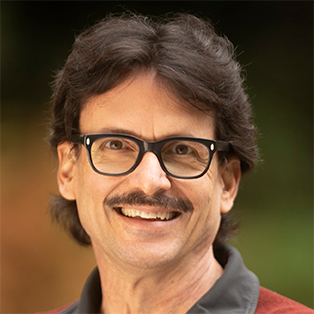
Research
Ion channels play a fundamental role in the generation of an electrical response to light in rods and cones of the vertebrate retina. The closing of a cation selective channel in the outer segment of these photoreceptors represents the final step in the enzymatic cascade that begins with the absorption of a photon of light by rhodopsin. The photo-activated rhodopsin activates a phosphodiesterase via the GTP binding protein transducin. The phosphodiesterase catalyzes the hydrolysis of guanosine 3′,5′-cyclic monophosphate (cGMP), lowering the cytosolic concentration of cGMP and closing a cGMP-activated channel in the membrane of the outer segment. The closing of a cation selective channel causes a hyperpolarization of the photoreceptor outer segment which is transmitted to the inner segment where it modulates transmitter release. Clearly the cGMP-activated channel plays a central role in visual transduction. The cyclic nucleotide-activated channels are beautifully optimized for their role in signal transduction. The long term goal of our research is to elucidate the molecular basis for these specializations. A detailed understanding of the molecular mechanisms of these channels’ function provides insight into electrical signaling in a number of sensory and physiological processes.
Our approach to studying the opening and closing conformational changes in these channels is to use a combination of molecular biology and patch-clamp techniques. After a cDNA clone for a particular channel has been isolated, it can be expressed in Xenopus oocytes and studied using the patch-clamp technique. The single-channel patch-clamp method measures the kinetic behavior of single ion channel proteins as they undergo opening and closing conformational changes. Statistical analysis of these single-channel events provides detailed information about the number of distinct conformational states of the channel protein, the allowed conformational transitions between these states, and the relative energies of the various conformations. The channels can then be genetically altered via gene cloning and site-directed mutagenesis, and the effects on channel function examined using the patch-clamp technique. In this way we can localize the regions in the channel sequence that are responsible for its behavior.